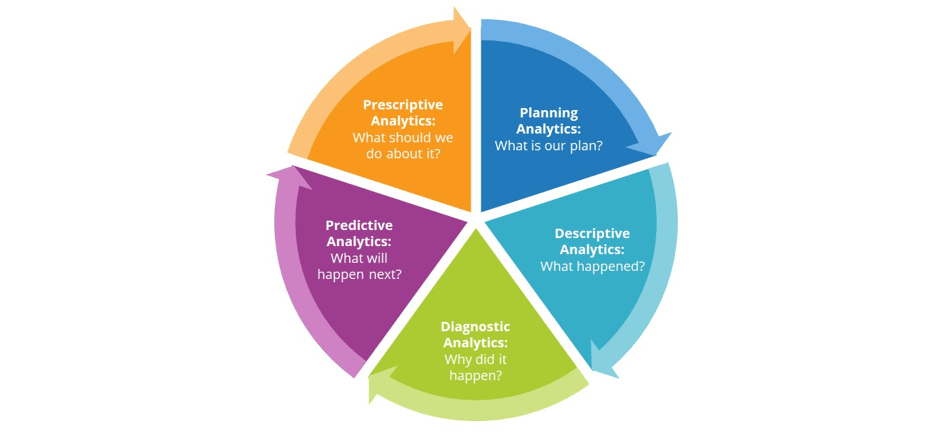This is why your software training is not effective
How to create effective software training step-by-step for users. Learn how to provide tailor-made software training with microlearning, Learning by...
Learning Analytics: when data is invested in training. Discover all our tips on how to optimize your training programs and boost learners' productivity with Learning Analytics.

Netflix, Spotify, Amazon and… your training department. What do they have in common? The ability to offer a personalized experience for customers, users, and even employees.
At the heart of this new way of thinking about experience is data. Slowly, but surely, data has made a place for itself in the world of training with Learning Analytics. This makes it possible to optimize learning processes and training tools in order to improve the performance of learners, all thanks to data.
While the trend is towards hyper-personalization of content and experiences, how can you make the most of the data that your employees’ uses offer you? Discover all our advice for optimizing your training materials and boosting the productivity of your learners thanks to Learning Analytics.
According to Forrester, 60-73% of enterprise data is not used for analysis. While Big Data also invests in the world of training, your organization’s data can be leveraged to better support your employees.
As the name suggests, Learning Analytics are first and foremost an essential tool of training departments. The challenge: to assess the effectiveness of training courses and improve them in duration, format, and content. But training departments are not the only ones who may benefit!
Learning Analytics are also an asset for business departments and operational managers. Understanding the way your employees use your tools or even identifying the processes with which they struggle allows managers to uncover ways to improve productivity.
And because training employees has a cost, your accounting department will also find it beneficial to know the impact of existing training systems in order to optimize the cost of training and investment in tools.
Analyze to anticipate. You may already assess the impact of your training, in one way or another. But what if Learning Analytics could also help you predict what hasn’t happened yet? A poorly understood functionality, a training module not completed, a training guide launched several times by employees of the same service… Observing employee behaviors allows you to anticipate potential problems in your training devices and adjust them over time.
Analyze to customize. With data, what matters is what you do with it. Among the many popular trends in training is Adaptive Learning. At the crossroads of artificial intelligence, Big Data, neuroscience and pedagogy, Adaptive Learning responds to the individual needs of learners by offering personalized training courses. Learning Analytics allow you to personalize employees’ training programs according to their role, how they use their tools on a daily basis, or simply based on the feedback they give you.
Analyze to stimulate. By giving you visibility on your employees’ habits, Learning Analytics are also a means to maintain a culture of feedback on a daily basis. Encourage your employees, congratulate them for their quarterly results, reward them for the training programs they have completed. In short, engage and nurture your employees over time.
Though a cornerstone of the digital transformation, data is perhaps also one of its greatest paradoxes. We collect, store, and organize data, without always fully taking advantage of its value. So, how do you leverage Learning Analytics for your training?
We can distinguish several levels and therefore several uses of Learning Analytics on a daily basis:

What does this all mean, exactly?
Among all the metrics at your disposal, identify the educational content that works best (and conversely, that which doesn’t work), i.e. that which engages learners the most. To do this, pay particular attention to the most popular formats (PDFs, videos, quizzes, etc.), the most repeated training courses, open rates, the time spent on content, etc.
You can also identify whether the educational resources tied to business strategy engage your employees (new business processes, a new HR platform, etc.). If this is not the case, it’s interesting to determine to what extent not attending training, for example, led to an increase in process errors or even slowed down productivity.
In order to analyze further, identify which population of learners makes use of various training content, and which does not. This information will then allow you to adapt the formats and types of content according to its audience, in particular through personalized training courses, for example. As a result, you keep your employees engaged with training (and therefore with your tools) and achieve their full potential within your company.
As you well know, when well-used, data can become an essential asset in your training and in optimizing employee performance. All you need is to choose the right metrics and implement the appropriate actions to adapt your training methods and materials over time.
Some platforms today allow you to do both at the same time, with dashboards information on the habits of your learners (statistics on the content consulted, time spent, etc.) and allow you to interact with them directly within their tools, via push notifications for example. The challenge: to keep employees engaged over the long term, increase their productivity and efficiency on a daily basis (thanks to well-used training content).
49% of employees prefer to access training at the moment and 58% prefer to learn at their own speed.
Source: LinkedIn
Whatever the format, corporate training is increasingly intended to adapt to the needs of employees, their diverse roles, linguistic preferences (with multilingual content, for example), but also their individual interests, thus giving rise to new training methods, from the virtual classroom to serious games via SPOCs (small private online courses) or digital adoption platforms.
More than just a means of training, the latter are a real training, support, and communication tools, integrated directly into your applications. With these platforms, push the right content, at the right time, in the right format for a better understanding of your tools and your business processes. And if you still have questions, the Lemon Learning teams support you on a daily basis to optimize your training devices and improve the handling of your digital tools.
How to create effective software training step-by-step for users. Learn how to provide tailor-made software training with microlearning, Learning by...
In this article, Lemon Learning explores the limits of software training via e-learning training and how to overcome them.
Learning by Doing is a training method that promotes practical hands-on experiences (instructional, learning while working).
Be the first to know about new B2B SaaS Marketing insights to build or refine your marketing function with the tools and knowledge of today’s industry.